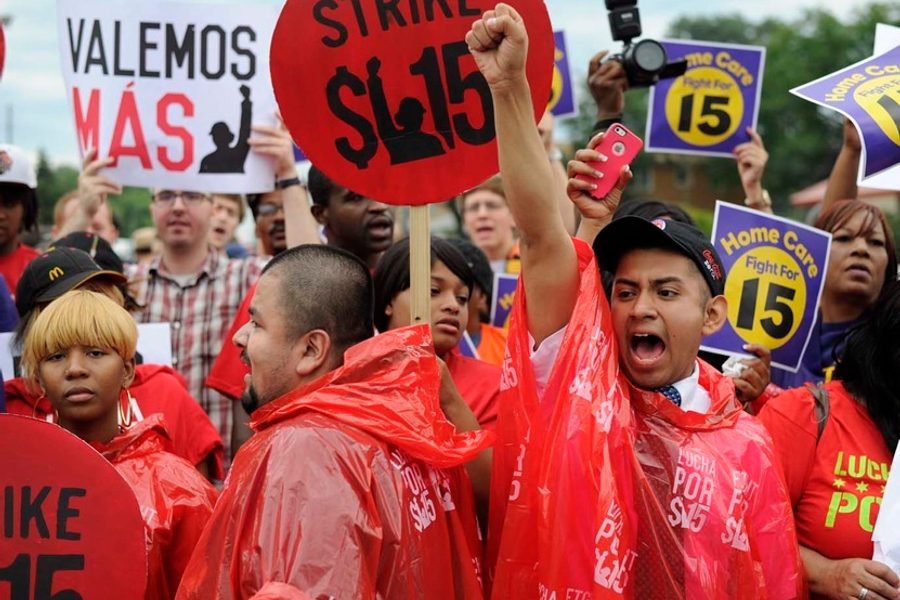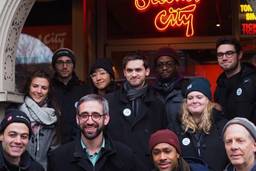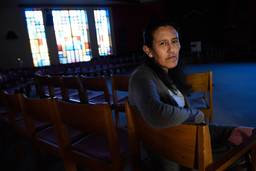
Like many immigrant families, that of Iris Sebastian (a pseudonym) has long played a precarious financial balancing game.
Her parents, Luis and Josefa, both crossed the border from Mexico in the mid-1990s. They met in the U.S. and settled down in Houston, where they had Iris, the oldest of four girls, soon after. Thus began the balancing game. As Luis and Josefa worked low-wage jobs in service or day labor to support themselves and their children, the family was in constant discussion about how to save a little here, a little there. Maybe that meant secondhand clothes or going without new school supplies. Or it could mean a few extra nights of work for Luis or Josefa at their second jobs as cooks.
Working two jobs and trading child care responsibilities sustained them through the boom of the 1990s and even the initial dip of the 2008 recession. From 2005 to 2013, both had steady cook jobs at a Burger King in the Montrose neighborhood of Houston.
That all changed in the fall of 2013. Luis had long suffered from diabetes, and fluid retention in his legs made it increasingly difficult to work on his feet all day, as his service jobs demanded. Eventually he had to severely cut down his working hours. The balancing act became more precarious.
As the oldest daughter, Iris, an 18-year-old high school junior, felt it was her responsibility to keep the family afloat.
“I was telling [my parents] I needed to get a job,” she says . “I always see my mother and she is stressed, I see my dad and his legs are swollen.” She’d tell him, “I know we need money, but I need you to calm down and relax.”
Against the wishes of her family, she, too, took a job. Four or five days a week, Iris works at Smoothie King, a local chain, for the minimum wage of $7.25 an hour.
It’s not uncommon for young people to work. Of the 16.7 million young people aged 16 – 19 in the United States in November 2014, 28.6 percent were employed and another 20 percent were looking for work, according to the Bureau of Labor Statistics. Similarly, a quarter of Latino youth like Iris are employed.
But what distinguishes Iris is the reason she entered the workforce — economic need. The children of poor families already start off further behind for a slew of reasons, including food insecurity, growing up in a neighborhood without adequate resources, and simply the stress of being poor.
Acting as a breadwinner while still a teenager may push these youth further behind at a critical time in their education. That’s not true is every case—most scholarship on the issue is mixed as to whether getting a job while in high school helps or hurts overall achievement — but juggling school and work may exacerbate the difficulties faced by low-income youth. A 2002 report by the Pew Hispanic Center highlighted this dilemma, finding that, for second-generation immigrant children, “pursuing an education beyond the age of 16 involves an economic sacrifice.”
The children of immigrants — even those born in the United States — are more susceptible to finding themselves in such a bind, because they are more likely to be in poverty. In Texas, children in immigrant families are 13 percent more likely to be in poverty — 34 percent in 2012 — than children in U.S. born families, 21 percent of whom lived in poverty in 2012.
Numerous young people from immigrant families are in the same predicament as Iris, says Emily Timm, deputy director of the Workers Defense Project, a Dallas-based workers center. “They have an immediate need to work instead of focusing on moving into college or a career,” says Timm. By prioritizing work that will support their families — rather than saving for school or taking on college-application-friendly after-school activities — they risk their educational prospects. “That can create a whole other generation of unskilled workers that will continue to be stuck in the types of employment their parents are stuck in,” says Timm.
In navigating the challenges of poverty, the biggest difference between undocumented and non-immigrant families is access to federal and state assistance programs, according to Giovanni Peri, a professor of economics at the University of California, Davis. “The challenges in receiving assistance for undocumented families are incredible,” says Peri. In the case of Iris’ family, disability insurance for Luis could have helped the family stay afloat without Iris going to work, but as an undocumented immigrant, he was ineligible. “Essentially, they don’t have access to anything except for emergency healthcare,” says Peri.
The emergency room wasn’t enough to cover Luis’ medical needs as a diabetic. He began struggling with his health soon after he moved to the United States — “there were so many restaurants here,” says Iris. He’s not alone: A 2008 Health Disparities report by the City of Houston found that Latinos in Houston are more likely than the white population to have negative health indicators and are less able to access preventive services. Because he is undocumented, Luis isn’t eligible for coverage under the Affordable Care Act, and the service jobs he works rarely provide healthcare. With little disposable income — and a growing family — he neglected his diabetes. Right now, he buys medicine that is imported from Mexico.
The family is hanging its future on several hopes. One is that Luis and his wife will receive work permits under Obama’s immigration executive action announced on November 20. Because all of their children are American citizens, and they have been in the country for nearly 20 years, they are eligible to receive a work permit through a deferred action program, which will also keep them from facing deportation. However, they have not yet applied. Many immigrant families are adopting a wait-and-see approach to the permits, concerned about fines or wary of exposing themselves legally by stepping out of the shadows.
Another is the future of Iris and her sisters. Iris is still determined to get a degree and is counting on a patchwork of aid and scholarships to help her attend community college and eventually university. Having seen her parents struggle in the low-wage economy, Iris is adamant that she wants to help support them.
Iris and her parents are also pinning their hopes on a movement — the Fight for 15. In early 2013, all three became involved with the nationwide push by retail and fast-food workers for $15 an hour and a union.
Earlier this year, Iris was among a group of protesters arrested for blocking traffic as part of a wave of national fast-food worker strikes. Not only does she see a need for a higher minimum wage, but also for control over one’s schedule and the right to complain about workplace abuses — especially for the days ahead when she is juggling work and college.
Iris is proud of her parents’ activism and insistent that they have the right to speak out. “Just because you’re undocumented, doesn’t mean you shouldn’t have a voice.”
This story was reported through the Institute for Justice and Journalism’s Immigration in the Heartland fellowship.







